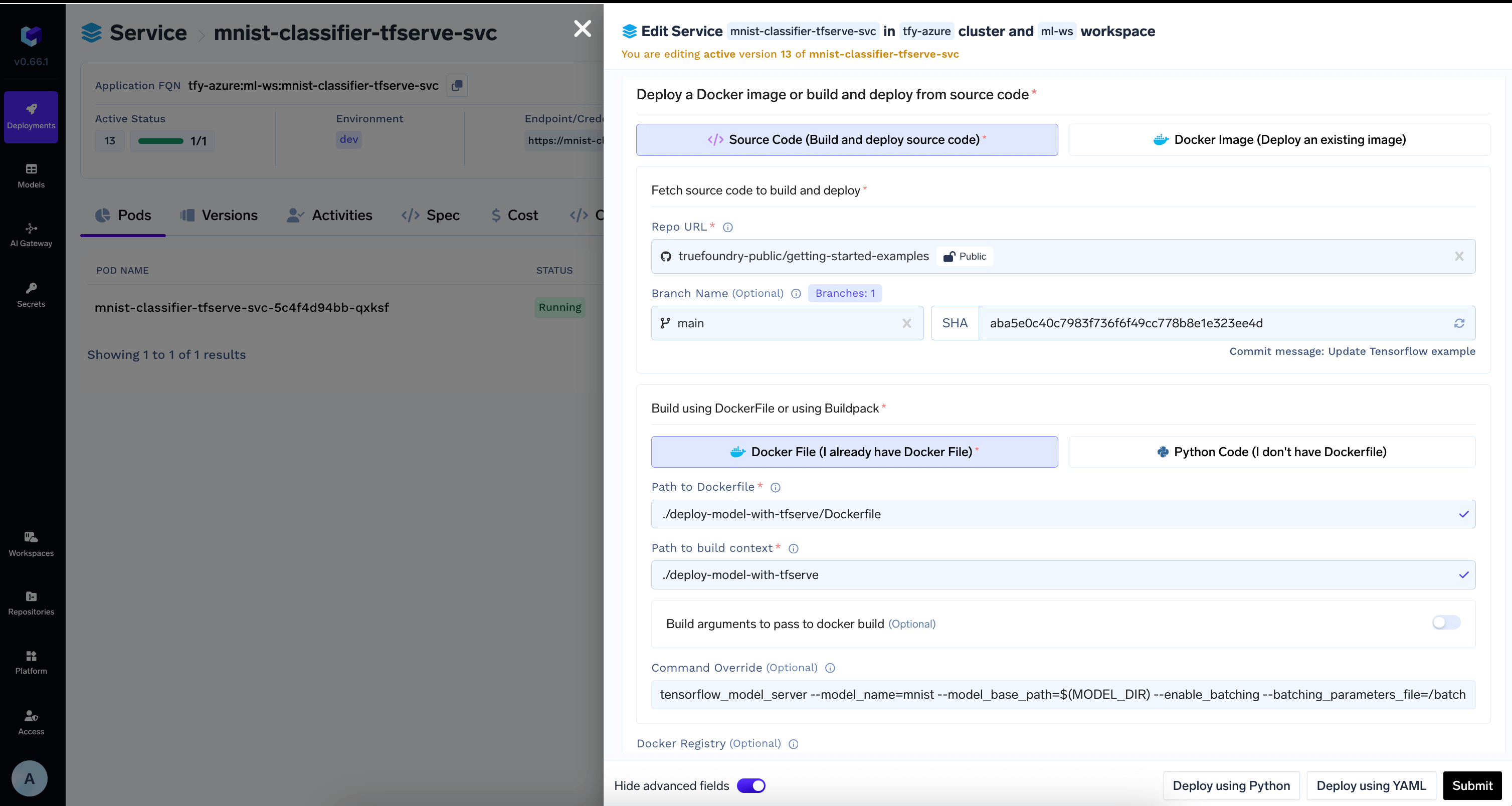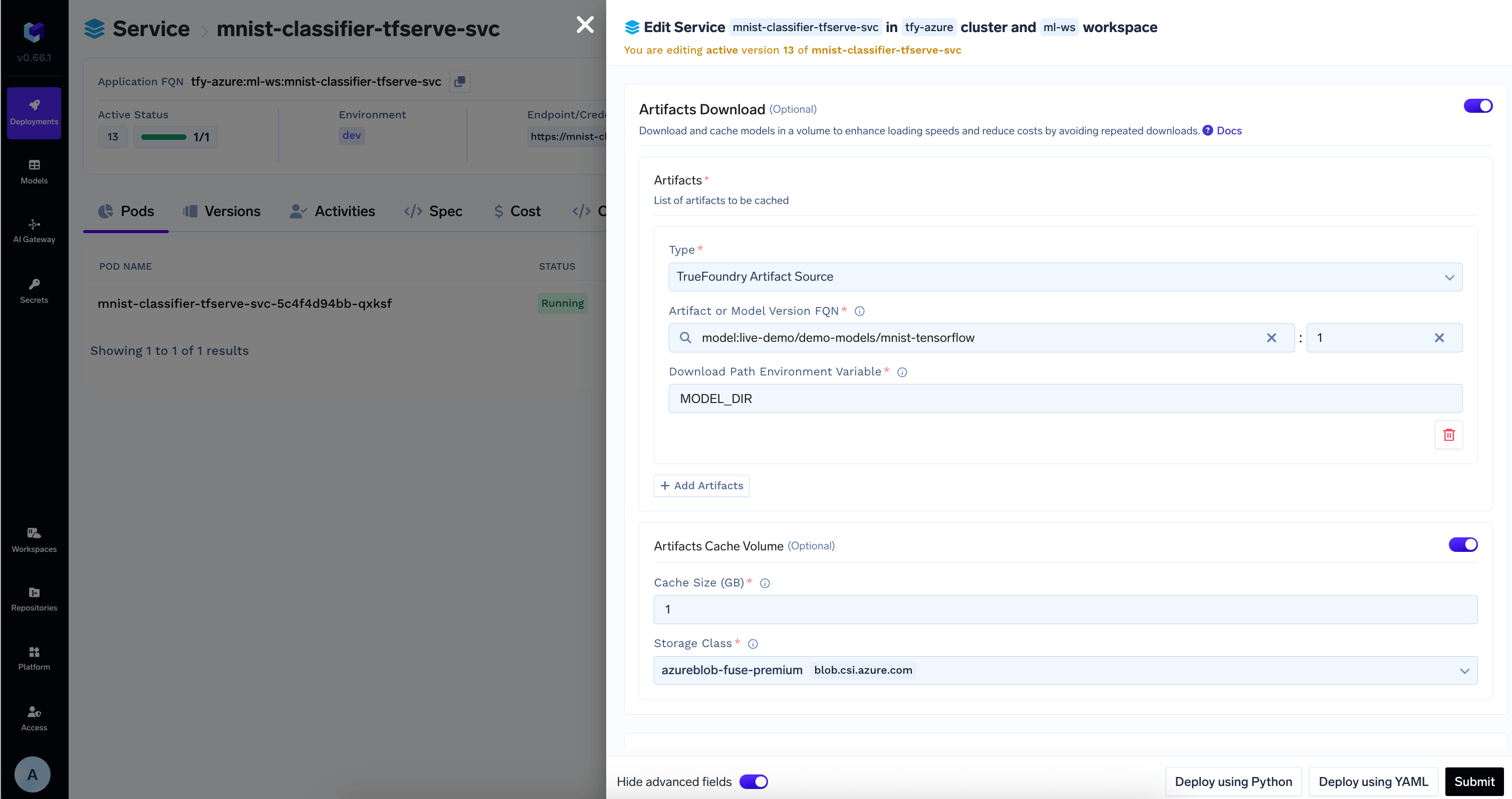train.py: Trains the model and exports it inSavedModelformat.batching.config: Contains dynamic batching configuration.requirements.txt: Contains the dependencies.
SavedModel format checkpoint is self contained and can be deployed without writing any extra code.
Exporting the model in SavedModel format
Running the server locally
- Install the dependencies
Shell
- Run the server
Shell
- Test the server
Shell
Deploying the model with TrueFoundry
To deploy the model, we need to package both the model file and the code. To do this, we can follow the steps below:1
Log the Model To Model Registry
Log the saved model to the registry. You can follow the guide here to log the model to the registry.
Log Model
2
Push the code to a Git repository or directly deploy from local machine
Once you have tested your code locally, we highly recommend pushing the code a Git repository. This allows you to version control the code and also makes the deployment process much easier. However, if you don’t have access to a Git repository, or the Git repositories are not integrated with Truefoundry, you can directly deploy from local laptop.You can follow the guide here to deploy your code.Configure the source code and build settings as follows:

MODEL_DIR environment variable where the model will be downloaded to.3
Download Model from Model Registry in the deployment configuration
TrueFoundry can automatically download the model at the path specified in the 
MODEL_DIR environment variable to the deployed service.Add the model id and revision from HuggingFace Hub in Artifacts Download section
4
View the deployment, logs and metrics
Once the deployment goes through, you can view the deployment, the pods, logs, metrics and events to debug any issues.